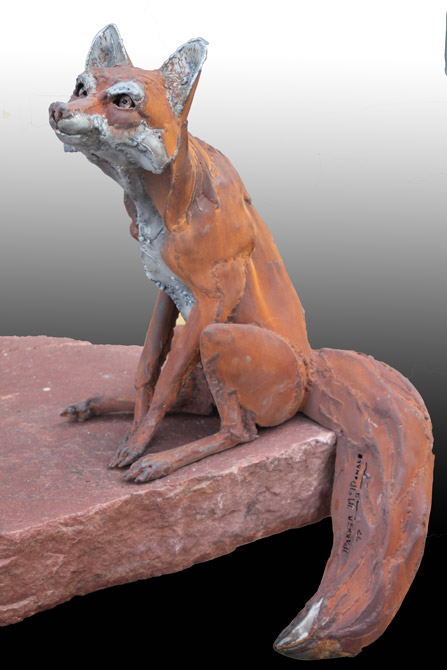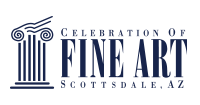Some people are lucky enough to know at a very early age what they will be when they grow up. Even fewer are lucky enough to actually be that thing when they do in fact grow up. But even among those who have a clear vision of what their future career will be, it’s not always a direct path. And that was the case for Parker McDonald.
Though creating with his hands has always been a part of his life, Parker took a career in construction for many years as a way to support his family and his art. Though it wasn’t the full-time art career he pined for, his time in construction arguably helped develop some skill sets that would later influence his art.
Parker had long painted, but it wasn’t until he began sculpting, welding and fabricating, that his career in art flourished. His subject matter just so happens to be one of his other great loves: wildlife. As a first-time Celebration of Fine Art artist, one thing Parker is most looking forward to (aside from meeting new people) is exploring the plants and animals of Arizona. Maybe we’ll see desert-inspired sculptures during the show!
What inspired you to pursue art as a career?
Art has just always been a part of me since I was very little. When people asked what I wanted to be when I grew up, I always said an artist.
How long did you spend in construction before pursuing art?
I’ve always done art. To have income though, I worked in construction. But the goal was always to be a full-time artist. I worked in glass shops and all kinds of construction for a long time and made a couple tries at being an artist, but couldn’t make enough to support myself.
But about 20 years ago, I started sculpting, welding and fabricating. That kind of tipped me over the edge and it started working.
What is the most rewarding thing about your work?
When I complete a piece. Often, you’re just in this zone––working and working. Then there’s this moment when you’re done and you step back and it hits you that you created that. So, the completion of a piece is fulfilling. But I’ve also told people that once somebody has a connection with a piece and actually pays hard-earned money for it and takes it home, and it ends up in a permanent location, that kind of puts a bow on it and finishes the project. That’s a rewarding feeling.
What is the most challenging?
There are a few challenging parts. One is the technical aspect of it. I’m a wildlife artist so you’re always striving for good anatomy. But the other is, you’re self motivated. There’s no one making me start at a certain time. So you have to be self motivated. You have to be your own driver and push forward yourself.
Making the work is the easy part. That’s what comes natural.
Has your work evolved over the years?
For my first sculpture, we were living in a little town in Minnesota and there was a municipal group that had some funds available. I had been painting some murals locally but hadn’t done any sculpture yet. They presented me with an idea and a budget and I figured I’d buy a welder and build it. And it’s just evolved from there. I learned how to bend steel and I’ve been learning ever since.
I’ve always been drawn to wildlife since I was little. Growing up in Colorado, I was outdoors a lot and in the mountains. Wildlife has always drawn me in.
Is there a particular piece you’re excited to introduce at the Celebration of Fine Art?
The biggest piece I’m bringing is a portrait of a bison that’s six or seven feet tall called “The Range Boss”. That will be fun to present at the show.
What drew you to the Celebration of Fine Art?
I have a lot of artist friends and I talked to one of them who’s been doing the Celebration for several years and that piqued my interest. I drove down last March to check it out and was excited. And luckily I was accepted. It’s always fun meeting art-interested people and talking to people in the art community. They’re there because they like art. And being an outdoor guy, it’s always fun to be in a new landscape with new plants and animals. I’m looking forward to getting to know the desert.


